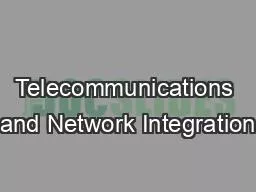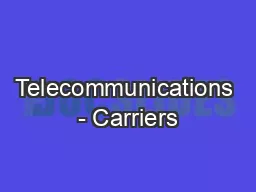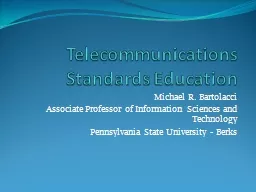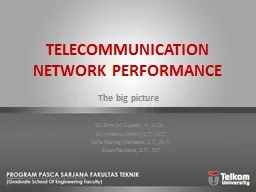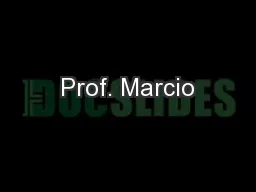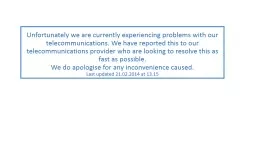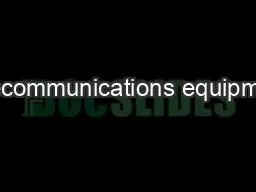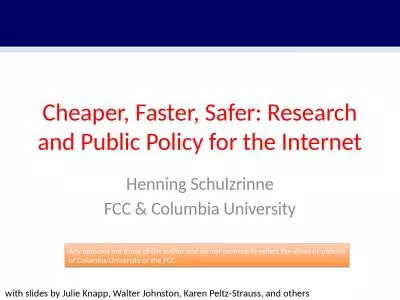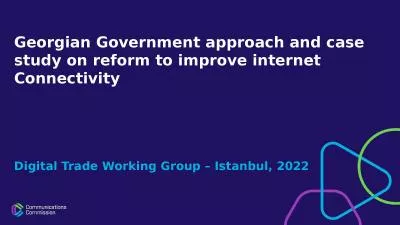PPT-Telecommunications and Network Integration
Author : opelogen | Published Date : 2020-06-29
Telecommunications About Us 11 Principal Academic Units Degree Students 21229 Tuition Room Board and Fees 20102011 50724 Faculty 2100 10000 Acad Appts in Teaching
Presentation Embed Code
Download Presentation
Download Presentation The PPT/PDF document "Telecommunications and Network Integrati..." is the property of its rightful owner. Permission is granted to download and print the materials on this website for personal, non-commercial use only, and to display it on your personal computer provided you do not modify the materials and that you retain all copyright notices contained in the materials. By downloading content from our website, you accept the terms of this agreement.
Telecommunications and Network Integration: Transcript
Download Rules Of Document
"Telecommunications and Network Integration"The content belongs to its owner. You may download and print it for personal use, without modification, and keep all copyright notices. By downloading, you agree to these terms.
Related Documents

